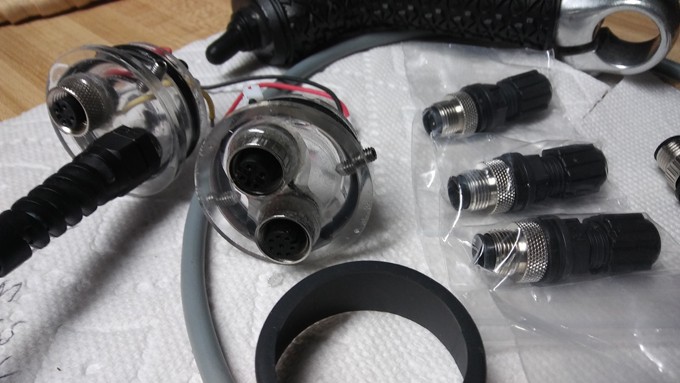Leaderboard
Popular Content
Showing content with the highest reputation on 01/11/2020 in all areas
-
Hey Guys! Remember this thing that I found on Florida’s Treasure Coast a couple weeks ago and posted about? I was so disappointed there were no visible markings to link it to the1715 Spanish Fleet that sunk during a hurricane. Well, I decided to carefully try to separate the silver sandwich with a paring knife, and was successful with minimal damage. The inside surfaces were dark and thick with corrosion but I kept working on them(rubbing on wet aluminum foil did the best...very time consuming. I don’t have an electrolysis setup yet). So glad I did it! I’ve definitely found my 1st Pieces of Eight finally (1/2 Reales likely)! Minted in Mexico between 1700-1715 during Philip V’s reign in Spain, if my research is correct. They may be little, but I’m tickled pink with them! 🙂9 points
-
I've been hunting a lake nearby for the last week, so far, every hunt has produce some nice silver or gold jewelry. Today I was able to retrieve 3 more rings, 2 silver and 1 junk. I found something else, but, I'm not sure what it is. Here's my setting: Park 2 Manual GB Sens 22 2 tones Iron bias 0 Tone break +5 up Tons of trash to wade through to find a keeper, but, very satisfying when it happens.5 points
-
Several months ago friends and I went to look for some lost Civil War valuables. Since we all had signed a Non-Disclosure Agreement I am unable to say where it was at except that the state is Tennessee. We were using a new type of metal detector that I put together and had a friend from John Deere software division do some programming for the unit. This system uses 3 separate frequencies for 3 separate coils and builds a 3D image of the metal in the ground. The images show a depth of over 5 feet and we expect to find the item close to that depth. Since we are looking for something rather large this works very well to keep us from digging the smaller items. We use a standard metal detector for finds closer to the surface as well, and yes we have found more than we expected. We arrived on a rainy day and set up camp for the next 10 days and settled in. The rain ended about midnight and we knew that the ground would be wet. We had early breakfast and proceeded to gain the land owners permission to hunt on their land. That took some negotiation to get everyone’s permission but we had written permission in hand. We then unloaded the 4 wheelers and equipment and set forth to locate what we were after. After digging up almost 2,100 pounds of trash and a couple of small relics we called it a night. The next several days proved to be just as bad as our first day on the hunt, finding only small stuff and very few relics, but we still had a pile of trash left to dig. On the 7th day we had a very good target that looked like we had found what we were after. We were able to dig it up and pull it from a 6 foot hole and we knew we had found something important. We had uncovered a chest that belonged to a 2nd Lieutenant of the Union Army. Inside were several of his items including a Remington Model 1861 Army Revolver of a 22 caliber. Also there were numerous other items including 8 $1.00 gold pieces. He had some silver tableware, razor, and many other items. The chest had shown wear from being in the ground and the inside material had all but rotted. Surprising as it was the chest was In good condition as someone had put bees wax on it and it was wrapped in a trap of some type. The heavy iron straps that held the chest together was all intact and just slightly rusted. One of the locks was mostly gone, but the second one was in much better shape. Most of the chest has been cleaned and redone and looks almost new, and the other items have also been cleaned properly. Some of what we had found will be placed in a museum near the location of which it was found, while the gun and the coins have been shared between the people who went. Everyone had an equal share in this hunt and 2 of the people were brothers who wanted the pistol. I was given 4 of the gold pieces and now I have them hanging on my wall. We are planning another trip back because we know that the treasure we are looking for is there. Since we have the area narrowed down we should find it within a few days. The land owners have given us the permission again and we have plenty of equipment this time to make it go much faster. Below is a picture of my coins as I am still waiting on pictures of the chest and other items.4 points
-
Here's the thing; if you are Red Dirt Digger or Reg or JP who not only have the inclination and the time to get out and detect, they have the know-how and they have the ground where success (i.e. paying off their detectors), is possible. Don't think most of us are in that situation. There is no way I will ever pay off my detector(s), and that was never the hope. If you try to be economically prudent with buying detectors and hunting for gold, you are in the wrong hobby. What my detector allows me to do is to get out into areas that I would not usually go, to test my skill and luck and try my hand at finding something…it is the hunt that you cannot put a price tag on. I am lucky in that I have been able to pay for my detectors mostly with gold I have found. But the majority of the gold I have found comes from about three summers of dredging in the Mother Lode of the Sierra Nevada's in the late 70's, spending 10 hours a day underwater. As a friend once commented it's like voluntarily going to Leavenworth under water (a famous prison where they used to crack rocks all day). At one time I had accumulated about five pounds of gold and at todays prices, because I saved most of it, that has helped pay for most of my detectors. Nowadays I do not have anywhere near that amount of gold, but I do have years of fantastic enjoyment of new places, new experiences and new people. That has been worth everything.4 points
-
I detect for gold alot and have paid off my detectors since the 2100 many times over. My best was the 4500...paid off 40 something times over. Its my backup detector after the Zed which is catching up to the 4500 in times paid off. While spending time wandering deserts other income opportunities come along, meteorites, gems, ornamental stone deposits. Detectors also lead to taking out leases and paid detecting from mining companies. But whether your obsessed like me and many others on this forum or just a hobbyist its great just to get out in the bush/desert with friends or family.4 points
-
Here's a video of the Minelab Vanquish 540, Equinox 800 and eTrac comparing some targets while relic hunting. The area is challenging because there are not many targets left and the EMI is terrible. Steve if this should be under Comparisons feel free to move the post. Thanks3 points
-
I've had this coil for quite some time, but it was packed away and forgotten. It was purchased for A$60 because I was intrigued. It is the anti-interference version. Measures 12 x 4 and uses the MInelab lower rod. Weight is decent, build quality is good. Performance in the field still remains a mystery as I've yet to use it. I gave it a quick air test just to see how it behaved on the Tdi Pro. This version has a hot spot in the centre of the coil which appears very sensitive to small targets at shallow depth. Seems to hit fairly well at shallow depths but doesn't have much punch for the deeper targets. Test garden results on coins would give real world depth on coins between a solid hit around 15cm or 6 inches and fading fast past 20cm or 8 inches. Useless air test with ground balance off, gain at max, in ALL, frequency in the middle, pulse delay at 10. 1 grain was 7cm .5 gram gold coin 16cm 1/2 Sovereign 23cm Us Quarter 23cm Aussie Penny 25cm Whites Buckle 33cm So in summary it hits hard on small and shallow targets, the centre of the coil is a hot spot for sure.. Fades fast as depth increases, the big Whites buckle just managed 13 inches. Since I managed max gain on the Tdi Pro in an EMI hot zone, the Anti-interference feature seems to work ok.. One of the things I like about the Tdi machines is the ability to plug in all sorts of coils, never know if you don't have a go.. My Tdi SL is highly resistance to EMI and the Pro less so but still very good. This coil could make more sense mounted on a Minelab around electric fences and mobile phone towers.. etc. All the best, Karelian2 points
-
I've never had that great of a post-hunt surprise and probably never will. Great job, both in your hunt but also in your perseverance to find out what you really had, and well deserved , too. A great piece(s) of history to boot!2 points
-
Hi Yes I agree with you Alexandre , a serious MD test must be a blind test. If the tester knows where the target is buried and the kind of target buried , in most cases he will tell that he detects the target, even its detector cannot do it. As you said he THINKS that he detects it but it is a kind of psychological "auto suggestion" process ( sorry it is in French ) . The MD tests must be done very scientifically with a very strict procedure as you have done above . Doing this with many detectors of different brands on my own bed tests , I arrived to the conclusion that the max detection depth for a VLF detector in moderated mineralized ground is always around 28/30cms for a 10Centimes napoleon3 ( 10grams french copper coin ), no more ,whatever the detector brand is . Tthis is just logical because the electronic/electromagnetic physical laws are the same for all the machines.... The last test that I did was with the Nokta Simplex+ , and the result was again 28cm on this 10C Napoleon coin. By the way I am looking forward to see a Fisher PI coin/relic machine coming after the impulse AQ and the Terra , if this is technically possible .And I am looking forward to see a machine beating the 30cm depth on the 10Cent Napoleon 3 ( with a very good iron disc of course ) , I have never found one up to now …. thanks , Alain2 points
-
2 points
-
Good job, that must have been so fun to open. 😀 happy hunting!2 points
-
They are coins from here in Europe. Its appearance seems to be copper, but nothing is further from reality. Its material is highly ferrous and as I have put in the photo when they get lost on the beach they are not worth even for the legal course. When I had TDI SL you had to dig it if you wanted to recover gold and it was frustrating to make 12 or 13 inch gaps and get that out. The beaches of southern Spain what I live in are full of these coins2 points
-
I use both the sdc and the Zed. In high yield/normal/smothing off the Zed is an amazing machine that will find gold so small that even the sdc will hardly find ,especially in difficult ground. Note: you will need metal free boots!! Both machines have a different target profile with respect to the ground your hunting. In the open field the Zed is King by a large margin and superior over any other Gold Detector that's out there2 points
-
I have already found a ring of 22k 0.3 grs I think 0.2grs 18k and 0.1grs 14K The chains in 18k it depends on the size of the mesh In 14K it's much easier but here we don't have any, it's only 18k2 points
-
Well with apologies to Dew and in defense of the overthinkers (I’m one myself) the whole reason for a forum is to ask questions and discuss things. I guess where I have a hard time though I endeavor to be patient is when questions are asked that were answered earlier on the very same thread. People don’t read through, they jump to the end the ask the questions again. But that’s ok. It’s just the nature of the medium and people being in a hurry. And some stuff is complicated, like how disc is implemented in a PI detector and how it differs from a VLF. Bottom line is it is a job I took on myself to set up and moderate a forum and I’ve got no right and in fact am stupid to complain when people ask questions and discuss things. It is the reason the forum exists. So I do apologize Dew... your questions are welcome as are your contributions to the forum. That out of the way.... yes, I agree with you Joe!2 points
-
Let's not OVERTHINK this detector. I remember Rick pointing out that this is a very simple detector. Maybe not as simple as a Whites Dual Field but still simple. Where the OVERTHINK comes in is that since we don't have one in hand we are still trying to compare it to VLF detectors. Steve has pointed out that we can ONLY compare it to other PI detectors. Again, most are pretty simple with very few controls. Mode control on the Impluse is about as complicated as it gets. The charts are pretty simple to understand (unless I am over simplifying them), reject the differ size nails and you reject different denominations of Euros. Again, they are in France and can only compare Euros with the nails. It is also stated that the shape of the coins verses the shape of the nails will cause a double beep in the nail and not in the coin on depending on the mode that you are detecting in. It has been stated several times that Le Jag almost always prefers to hunt in All Metal where nothing should be rejected except for saltwater which is always rejected as it is a built in feature which again makes this a simple machine as it is one less thing for us to fiddle with. Once he acquires a target then he will change Mode to decide whether or not do dig the target. Now if I am underthinking this detector please let me know. I read posts and think, "Is it me not understanding or is it others making it more complicated?". Just my two cents, Joe2 points
-
If I still had my Z there is not a chance I would do it - even if I got a professional do it. Just too much money involved but that's just me, each to their own. Be great if the NF coils are just plug and play for you GPZ mob. Re: tiny sized gold that the GPZ will find, have a squiz at an old thread of mine here. The first pic shows a piece a similar size to the echidna's nose on an Oz 5 cent piece. Not sure if you are familiar with a 5 cent piece but it is bloody small 👍2 points
-
Many PIs, BBS, VLF of all types have given up, there are not really detectors that have shown themselves to be brilliant. The good mastery and experience of the prospectors meant that they were able to score more points. Count of correct answers: ferrous targets + 1pt / gold targets + 3pts.Counting the wrong answers -1pt.2 points
-
Gold Nugget Detecting with the Minelab Equinox Metal detecting for gold nuggets is one of the most difficult detecting tasks, and learning to run a VLF detector in highly mineralized ground will challenge even the best detectorists. There is more to this subject then can be covered in a brief article but I will try and offer some tips to get people started with the Minelab EQUINOX for gold nugget detecting. Minelab Equinox with 6" coil at work gold nugget detecting Tiny nugget in scoop - the Equinox can find very small gold nuggets! The EQUINOX 800 has two modes that are not available on the EQUINOX 600 – Gold Mode 1 and Gold Mode 2. The two Gold Modes as far as I h e been able to determine are identical except for the default settings. Gold Mode 1 is set up with a default Recovery Speed of 6 and Gold Mode 2 is set up with a default Recovery Speed of 4. These modes employ a boosted audio that increases both in volume and pitch as a target is detected. This in turn accentuates the signal on tiny gold nuggets. The threshold is also different than the “reference threshold” employed in the other modes and is more responsive to ground changes, providing important audio feedback about changing ground conditions. The Gold Modes are similar to the threshold based all metal modes available on most VLF nugget detectors with a major difference. A target id number is displayed for strong targets and each target id number can be independently set to accept or reject. In this regard the Gold Modes are a hybrid mode with more discrimination capability than is available in normal threshold based all metal modes. Normal VLF nugget detecting relies on the operator having their ear very tuned into the threshold sound of the detector. Slight variations in the threshold tone can indicate potential targets. The threshold tone is also very sensitive to changes in the ground mineralization. This includes the so-called “hot rocks” which have mineralization different than the ground they reside in which makes the detector react to them as targets. The challenge is to get the detector to operate with a relatively smooth threshold as the coil is swept over the ground so that desired targets will stand out. If hot rocks are signaling with every sweep of the coil, then progress will be extremely slow if not impossible. Tuning a VLF detector to hunt nuggets starts with the theoretical most powerful settings, and then reduces those settings until the detector becomes stable. Every setting is a trade off, because making a detector more sensitive to gold also makes the detector more sensitive to mineralized ground and hot rocks. The key settings for the EQUINOX 800 in Gold Mode are: Frequency. Multi frequency is the default and the most powerful frequency setting, with 40 kHz and 20 kHz single frequency options. Multi is the most sensitive to gold, but also reacts the most to bad ground and hot rocks. The goal is to get the EQUINOX to run well in Multi but if bad ground or hot rocks make that impossible, going first to 40 kHz and then to 20 kHz will make the EQUINOX progressively less reactive to the ground and the hot rocks. Ground Balance. The default is ground tracking on. Tracking attempts to keep up with and smooth out the variations in the ground. In doing so it has a filtering effect and can possibly tune out the slight audio variations that come not just from the ground but from very small or very deep gold. Tracking off is therefore the most sensitive setting, with adjustments made via the Auto (pump) method or manually. Sensitivity. The range is 1 – 25 with a default of 20. Increasing sensitivity increases the audio response from all targets, plus the responses from things like electrical interference. Most importantly, too much sensitivity makes the ground itself into one giant target, and so if the detector refuses to ground balance properly then reducing sensitivity until a proper ground balance can be obtained is critical. The default of 20 can easily be too high for the worst ground, and settings in the mid to low teens may be necessary. Recovery Speed. The range on the EQUINOX 800 is from 1 – 8. The defaults are 6 for Gold Mode 1 and 4 for Gold Mode 2. Recovery speed as regards nugget detecting can be viewed as a smoothing filter. Higher settings act to smooth out audio responses from the ground and hot rocks. Lower settings enhance audio responses from weak gold signals, but also make hot rocks and bad ground stand out more. False signals from the coil bumping a rock also increase at lower settings. In general the EQUINOX will be easier to handle at higher Recovery Speed settings, with more careful coil control required at lower settings. Iron Bias. The range is 0 – 9 with a default of 6 in both Gold Modes. Lower settings reduce the chance of gold being identified as ferrous, while higher settings reduce the chance of ferrous items being misidentified as gold. Accept/Reject. The default is -9 through 0 rejected, 1 through 40 accepted. The discrimination range on the EQUINOX runs all the way into the ground signal, with ground signals in highly mineralized ground normally coming in at -9, -8, and possibly -7 though it depends strictly on the ground itself. Hot rocks can read almost anywhere, even in the positive number range in the mid-teens or elsewhere. Electrical interference is also likely to exhibit in the low negative number range. Any offending numbers including trash targets can be blocked directly, but the more numbers that are blocked or rejected come at a cost of slightly less signal strength on desired targets. Threshold. The range is 1 – 25 with a default of 12. This is normally set to be just loud enough to hear, but no more. Just a barely discernible tone. However, the threshold can also act as a backend filter. Once all other tuning has been completed, the threshold can be set lower until it is silent, or set higher than normal. Running silent can suppress small variations in the ground signal but also the weakest gold signals. Running the threshold higher than normal can smooth out weak variations, again with a subsequent loss on the faintest gold signals. My starting point (initial settings) for either Gold Mode are: Frequency: Multi Ground Balance: Auto (pump method) with manual tweaking Sensitivity: 20 Recovery Speed: 6 Iron Bias: 0 Accept/Reject: -9 through 40 accepted (either through the settings or by hitting the “Horseshoe button”) The main thing I am going to try and do is operate the EQUINOX in Gold Mode without blocking out or rejecting any target id numbers. The goal is to find settings that reduce and smooth out ground responses while reducing the signal from gold as little as possible. These two things fight each other and there are no perfect settings, but simply the best compromise possible. For some people that will mean making the machine very stable, while others may prefer hotter settings that require more audio interpretation from the operator. The first step is to find an area clear of trash, and walk a bit waving the coil over the ground. Chances are you will get lots of ground noise. Go into the settings and adjust the ground balance. This normally means pumping the coil over the ground while holding the accept/reject button (see the manual) until the ground response evens out. If the ground is highly variable with mixed hot rocks, waving the coil from side to side may work better than pumping the coil. With any luck the machine will settle right down. However, in bad ground it will not, and the solution normally will be to lower the sensitivity setting. Basically this just takes some experimentation, lowering the sensitivity and adjusting the ground balance until the detector reacts very little or not at all to being waved over the ground. If you can get the EQUINOX set to where no target id numbers are popping up at all as the coil passes over the ground but where you can still hear faint variations in the ground, you are there. Then it is simply a matter of going detecting, and digging every target that stands out above the faint ground variations present in the threshold tone. Gold can read anywhere from negative numbers all the way up into the 30’s so typical nugget detecting involves digging everything. However, most nuggets weighing under 1/10th gram will give a target id number of 1 or 2, nuggets under a gram in the single digits, and several gram nuggets reading in the teens and higher. The smallest or the deepest large nuggets will produce no target id number at all, just a variation in the threshold. In real bad ground you may have to not only reduce the sensitivity setting, but possibly even increase the recovery speed setting to 7 or 8. In ground that refuses to behave, switching to first 40 kHz and then 20 kHz will progressively detune the EQUINOX , making it easier to get a stable ground balance. Engaging ground tracking may also help smooth out the worst ground – you have to experiment. In severe ground all this may not work, with ground signals still coming in around the low negative numbers and possibly higher. Some hot rocks may read as positive numbers. This is where the EQUINOX can go to the next level. Go into the settings and reject or “notch out” the worst offending target id numbers. This will usually be -9, -8, and -7 but may include even higher numbers, including positive numbers. Block as few numbers as you can. Simply rejecting the bottom three negative numbers will usually settle the machine down a lot, especially if there is any residual electrical interference being encountered. Rejecting target id numbers does come at a cost in reduced signal strength on desired targets, but you may find now that the sensitivity level can be increased from one to several points, reclaiming that lost sensitivity. In theory if you can get the EQUINOX running stable with no target id numbers rejected you have the ideal situation. However, EQUINOX allowing some offending signals to be rejected with an attendant increase in the sensitivity setting may be the better way to go. It just depends on the situation. So far we have been trying to deal with bad ground by using various detuning methods. In low mineral ground you can go the other direction. If the detector ground balances immediately with a sensitivity setting of 20, then try higher settings. You can also try reducing the recovery speed setting from 6 to 5 or 4 or even lower. Each reduction of the recovery speed setting is fairly dramatic and you will find it suddenly very hard to get and hold a decent ground balance if you go too low with the setting. In mild ground however it can add substantially to the signal strength of the weakest targets. Finally, for the worst ground and for EQUINOX 600 owners we have other alternatives. There is no reason at all why the other modes cannot be used to nugget hunt. Park 2 and Field 2 are both very hot on small targets and offer the ability to use tones while nugget hunting. Prospectors who encounter salt lakes/salt flat situations would do well to remember the Beach modes as possible last ditch settings. Either Park 2 or Field 2 can make for very good nugget hunting modes. I prefer to use Park 2 as a base because by default Field 2 blocks out or rejects the key target id numbers 1 and 2. Small gold nuggets read there, so using Park 2 makes sure somebody will not accidentally reject nuggets in that range. You can use Field 2, but beware those blocked numbers and adjust accordingly. For Park Mode 2: Frequency: Multi Ground Balance: Auto (Ground pump method with manual tweaking) Sensitivity: 16 – 25 Recovery Speed 800: 4 - 6 (default is 6) Recovery Speed 600: 2 - 3 (default is 3) Iron Bias: 0 Accept/Reject: Everything accepted, rely on tones (alternative reject -9, -8, and -7 if too much ground feedback) I have suggested accepting everything, and then using the two tone mode to hunt by ear. If trash is minimal then set the tone break lower than normal, so that 0 and several negative numbers read as non-ferrous. This way you can have ground signals reading as low tones (and possibly at a lower volume) and signals from gold as higher tones. Again, this works well with both EQUINOX models. To sum up, I suggest trying to use the EQUINOX 800 in the Gold Modes with no target id numbers rejected. Tune up just like any normal nugget hunting detector, and dig all decent audio signals. Some nuggets may deliver a negative number response or no number at all. A secondary method for more difficult ground is to reject or block out offending ground and hot rock signals. And a third method for both EQUINOX 800 and 600 owners involves using the Park 2 mode as a nugget hunting mode. That should give people plenty to experiment with. Nugget detecting can be very challenging, but learning to do so means you will learn how to wring every bit of performance possible out of your EQUINOX , and that can benefit you in other areas of detecting as well. Good luck! Steve Herschbach DetectorProspector.com Earlier post on same subject Gold found in Alaska by Steve with Minelab Equinox Gold found in California and Nevada with Minelab Equinox1 point
-
Today I went to the beach to take advantage of the super tides. I got there and as luck would have it there was no one on the beach in my spots! I turned on the detector as I normally do by pressing in the on/off switch on the left side of the control housing. It turned on properly but I can remember I felt a 'give' that I hadn't noticed before. It was working so I just went about my detecting looking for targets. There were not that many either high or low today. When I went to take a break I got past the dry sand and tried to turn off the detector as I had turned it on. I pressed the button and all I felt was it 'give' without stopping. I tried repeatedly but no luck. I turned off the headphones and that didn't help, it just made it so everyone could hear. Now I know I've got a problem but what do I do? I unscrewed the connector to the coil and a message came on the screen that I think said 'Cd' and then the power went off. Now the power will not go back on. It was just before 5 PM in Chicago but I've left a message for Minelab. It will probably be Monday before I hear from them now. It looks like the 3030 will get some use or the SE Pro if I use a detector in the next couple of weeks. Anyone had a bad switch yet? Mitchel1 point
-
HOW MAKE A SERIOUS COMPARATIVE TESTS PROCEDURE First rule Blind tests are mandatory to be serious. Second rule if you do not agree refer to rule number 1 😊 The purpose of this playground, and not to take into account the feeling of the prospector. It is too easy for a participant to indicate that he is correctly detecting the target. But in general he does not detect it or he thinks to detect it. It often detects a ground effect. During our long experience and our meetings with prospectors at the beach, we realized that the prospector was often influenced by the pride placed in his detector. This is why we have implemented this drastic and non-falsifiable comparative tests procedure. Of course for this test you have to be 2 people. A person who hides targets and a person who tries to find them. The depth tests can be done simultaneously. It is obvious that here are static tests. The reality is even more difficult! See for yourself the catastrophic results .... Document here : ******************************* https://www.casimages.com/f/qyqU0eUlCSb ******************************* COMPARATIVE TESTS PROCEDURE.pdf1 point
-
1 point
-
Well, I think there are enough testers and users out now to have identified the potential problems of making the lead. There are several here on this forum who have helped make the situation better than when we first heard about the Xcoils. The manufacturer/coil maker has worked with them. I'm in the process of getting one. When I get it and I'm ready to cut the 19" cord I'll look at the instructions and chat with some people here. Even those who had problems got them fixed and went on to get another Xcoil. They know more than I do. They've seen them work. When mine is working I think I could make a good case that I could sell my Z for more money with a working Xcoil than a Z that has not been Xcoil modified! (It shouldn't be worth less or worthless. haha) I've lost the fear factor. It is a tool that can be modified. More gold is our cry! When the NF coil is ready and the connections are made known for that perhaps a Z with NF and Xcoils will be more desirable in the resale market. I've already asked the question about a detector paying for itself and everyone says it is about the enjoyment. It shouldn't matter much then about the cost of a coil, right?1 point
-
Dan, GREAT job fighting through all the mid-tone trash, to recover the goodies! NICE! Steve1 point
-
I did a test with my 4500 against my mates 7000 on both tiny gold and larger bits. On the larger bits i was able to match the 7000 but my settings were questionable as to whether they were usable (very noisy). On the smaller bits i wasnt able to hear them at all no matter what timings/settings i tried. it was at that moment id realised id made a big mistake for the last 4 years holding off buying the 7000. On a recent trip with another friend i got him to try his 5000 on 3 targets id found with the 7000 (standard gpz coil) They ended up being small gun pellots at good depth. We had to scrape off heaps before he could register a response.1 point
-
Luis, it appears your corroding coin above is a direct relative of the nasty corroding Zinc cents we have here in the US. As these zinc cents corrode away, they read lower and lower on the conductivity scale, dropping well into the mid-conductor range of the aluminum square tab and pull-tab (man's gold ring). It will be interesting to know if the Impulse AQ audio characteristics of a corroding zinc cent (or 5, 2 or 1 cent Euro) will be tell tale enough to skip digging them. ? ? ? ? Rich -1 point
-
Simple is better. My only concern with the AQ is going to be setting it up properly to hunt. I'm an end user. My mind cannot wrap around all the different aspects as it relates to detecting technology. I'm constantly amazed at folks like Steve who can not only understand all this stuff but also explain it in such a way that people like me can go " ok, do this now go hunt." If I miss the occasional small gold but still get 90% of the other gold sitting in the wet sand I'm going to be happy.1 point
-
Chase If nothing else you made me laugh when you said I’d buy anything new that beeps. You have a great day! Chuck1 point
-
For the past 2 years, all I did was cherry pick for old coins and did ok in that dept. But, I've already dug more gold and jewelry than I did compared to then. My time was limited, so, I had to be more selective and utilize my time to improve my odds. I have an opportunity as this moment to take the time and dig it all. This window will be closing at the end of the month,then I'll have to become a bit more picky.1 point
-
Does the Anti Rotation Mechanism lock the coil in place....if so, then any wear/abrasion should be minimal ? I’m looking at the small notched red male parts and notched female part of the coil bracket. Looks promising 👍 Excessive coil movement would probably override the design but if it offers good resistance then that should be sufficient.1 point
-
Thanks for the reply.. Yes I agree its the sub 10 inch coil I've been hanging out for for the gpz. As for the cutting the lead that defanitly scares me with cost of coils etc so if probley try sorce someone to do it that knows what they are doing 😣1 point
-
Next time it gives me fits I will pop it apart and see what I can find. There are 3 turn and 5 turn ones out. Not sure what would be sealed mil spec if even available that would be the same size. Thanks1 point
-
My shoulder aches lately are making it hard to do anything with detecting or shoveling. Atho, it almost looks like the pain is coming from the use of my computer mouse somehow? If my elbow is not supported, the shoulder pain gets really bad .At work its not an issue cause I sit up straight and have a desktop to support both elbows. At home, I slouch, and the shoulder pain gets really bad without desktop elbow support. Guess its my own fault I hurt sometimes but it makes mining a lot harder then too... Small volumes of dirt are where I am at in mining. under 5 buckets a day ,if that. Heated car seats work wonders on lower back pain I recently discovered, even better than advils. My buddy says to stop buying more mining junk as its a waste of money and more stuff to cart around. He may have a point there plus it gets expensive. I recently gave unused gear to our club to raffle off.Was hard to let it go but I wasn't using the stuff . No drywashers needed in wet Indiana and Illinois. I better quit rambling here. But winter is boring.At least its mild this year.Only 1 snow since October, extremely unusual !!! mid Jan temps in 30-50 range, should be 0-30 normally and piles of snow.1 point
-
https://www.faa.gov/hazmat/packsafe/ Portable electronic devices, containing batteries - Cell phones, laptop, camera, smart phones, PDAs containing lithium batteries, games, tablets, watches, etc. Most consumer personal electronic devices containing batteries are allowed in carry-on and checked baggage, including but not limited to cell phones, smart phones, PDAs, electronic games, tablets, laptop computers, cameras, camcorders, watches, calculators, etc. This covers typical dry cell batteries and lithium metal and lithium ion batteries for consumer electronics (AA, AAA, C, D, button cell, camera batteries, laptop batteries, etc.) Devices containing lithium metal or lithium ion batteries (laptops, smartphones, tablets, etc.) should be carried in carry-on baggage when possible. When these devices must be carried in checked baggage, they should be turned completely off, protected from accidental activation, and packed so they are protected from damage. Spare (uninstalled) lithium metal and lithium ion batteries are always prohibited in checked baggage and must be placed in carry-on. When a carry-on bag is checked at the gate or at planeside, any spare lithium batteries must be removed from the bag and kept with the passenger in the aircraft cabin.1 point
-
1 point
-
Not sure on part number but it’s a 3-3/4 turn Cermet 100K?? I believe. Mouser was out of stock when I last looked. The 10 turn is great for GB as it’s a much finer adjustment but they are a TIGHT fit in those uMax housings.1 point
-
1 point
-
I remember once when I ran into another gold hunter up in the desert. I was using the 2300. He commented it would take forever to pay for the machine with the tiny gold it finds....I thought to myself if I wanted to make money I could have just stayed home. Leaving work to go detecting is like leaving the gold mine to go play in the dirt. In a serious prospectors mind I do see how that works however and I would certainly be thinking in those regards... if it’s a business you have to. Its nice to have a hobby where you have fun and can find valuable items... My coin and relic machines have paid for them selves but my gold detectors have not...but I have had lots of fun with them that’s for sure. strick1 point
-
certainly would be nice to hear from Nuggetfinder or Minelab. But I've spent a lot of time out in the sun over the years so I'm probably hallucinating.1 point
-
A few afternoons back I went out to a local beach to do my normal searching. It has been a time of few waves and even fewer targets. Everyone hears this from me quite often but I've heard it from other detectorists as well. So, you relax, go slow and just enjoy the beach. A bit down from me I saw a group along the blanket line and there was something different. There was a little kid (older than mine) about 5 or so swinging a metal detector. It had a kinda orange coil and the kid just was playing with it a bit and then running around with the other kids. I decided to go up with my 800 in hand and have a little chat with him and maybe 'show' him how to find things. By the time I got up to where he was he was out near the water and the only one still around was his dad and his dad's friend or brother. We started up a bit of a chat and they said they had bought the detector off of Amazon for $60. I didn't recognize it but it was giving my 800 an EMI fit so I went to a different channel. I told them what I had in mind (quarter in hand) and they called the little boy over. I wish I had taken a picture of the detector but it was a short arm, adjustable with compression fittings, concentric coil detector of a brand I didn't catch. It had a screen that was discriminating and it did 'find' the planted quarter which the kid liked but didn't have that much interest in it. One of the really interesting parts of the story was the friend. He told me it was an Amazon purchase and thought that $60 should make it a very good detector. They didn't really have a clue. They asked me about mine and I told them and I could see their jaws drop a bit on now knowing that 'pros' like me were out with detectors from $500 to $900! It was way out side of their conception so they asked me what did I think of their detector. I didn't really pick it up but I told them there are these new little detectors that could be better than a lot of the detectors just 5 to 8 years old that sold for much, much higher prices. This is part of the new purchaser and market for the detector companies which provide higher end products like Minelab. It is a new reality of buyer and probably the reason for their low end detectors. When I came back and searched Amazon looking for this $60 detector I was flooded with many, many detectors from companies unknown. Minelab is not on Amazon it seems and many other searches for the average buyer. Some of you here see some advertising on this forum for the best metal detectors. I started a thread about it a couple of weeks back. One thing I did happen across when looking for the metal detectors were a few 'board detectors.' These were complete metal detectors on a circuit board that sell for less than $5.00! It becomes more clear that these detector circuit boards placed in a molded plastic handle become the brains for a $50.00 detector that wholesales for maybe $26. Components are cheap. Marketing and R&D are expensive! I didn't find much on the beach that day but I brightened the face of a little kid and I got a good story.1 point
-
Well it takes about 0.2 seconds to google the info for US Domestic flights, so here you go for the FAA rules (so this does not apply to international travel): https://www.faa.gov/hazmat/packsafe/more_info/?hazmat=7 Bottom line - maximum capacity you are allowed to bring on board per battery = 100 Watt-Hours (Wh) (an Equinox cell is 18.5 Wh, a GPX large cell is about 63 Wh). There is no limit to the number you can carry on board as long as the capacity limit is met and the battery remains installed in the electronic device. In addition, you can carry up to 2 spare batteries less than 100 Wh each, subject to AIRLINE approval. So if the GPX detachable battery packs are categorized as "spare" Li-Ion batteries can present a problem if the air carrier objects, which is their prerogative (as demonstrated in Steve's GPX Arizona detectorist example). All "spare" or standalone Li-Ion batteries must be carried on and cannot be in checked luggage. However, devices that contain Li-Ion cells less than the 100 Wh capacity limit can be in checked baggage as long as the device is secured and is prevented from inadvertently being turned on and is protected from physical damage. International rules vary and can be more restrictive than US FAA rules as encountered also first hand by Steve, so your best bet is to discuss the situation with your international carrier ahead of time. HTH BTW Watt-Hour is a measure of energy which roughly tells you the potential for fire causing Li Ion material. A Watt-hour = Operating Terminal Voltage (Volts) x Current Capacity (Amp-Hours). So a 10,000 mAH (10 AH) capacity alone does not tell you the energy (the parameter of interest to the FAA and airlines), you need to also know the operating terminal voltage which is usually between 3.5 to 22 VDC depending on how the cells are connected.1 point
-
This is suspicious. Copper is one of the highest conductors (pure copper second only to pure silver). Even copper alloys hold their conductivity well when alloyed with most elements (nickel an obvious exception). Further, an annular ('ring') shaped piece sets up larger eddy currents which will lead to higher TID's. Consider that very small aluminum pieces which aren't annular shaped give positive ID's. And (annular) steel washers are known to give positive ID's. Did you hold it next to a magnet? That's the best iron detector. (Some stainless steels are non-magnetic, but those give moderate TID's in my experience.) Copper plating is common on iron/steel and will give the appearance of an item being copper. Pardon my skepticism, but I'm a scientist and we are trained to be such. 🤔1 point
-
I know this was for the other person, but I have run 0-2 and have not noticed much difference. But things are different at the beach. Also one other point as to why I am testing these bouncing numbers is gold chains. Even though I have not found one with the Nox yet I want to make sure none are getting by. My air testing and even beach testing tells me I should have no issues. However something that has been in the ocean and re-set on the beach never seems to do what a simple bury in the sand target does. Dave1 point
-
1 point
-
If the carat is low, it will be easy to detect in all modes. If the carat is high and the jewelry is heavy (24K and> 4grs) then it will be difficult not to reject it and continue to reject ferrous in the same time.1 point
-
I have finally been able to do a little testing of the Vanquish 340 with V10 coil with no coil cover, which somewhat duplicate the testing done by abenson. The 340 has no high/low iron bias adjustment and has Coin, Jewelry and All Metals accepted modes. The only other settings difference was that I did not set the sensitivity on maximum. I set mine at half strength. The Vanquish 340 in All Metals accepted easily passed 4 for 4, the Monte's Nail Board test with a zinc penny in position 1. It also scored 4 for 4 in Coin mode. In Jewelry mode it was 3 for 4 with failure on sweep direction 4. I have not done this test with a zinc penny in position 2. Nails of course are different. I have my Nail Board test set up with older square nails. I used two 2" square nails and a zinc penny for a second test with all three targets on the same plane in this configuration with the space between the nails and the zinc penny at 1/2": l-------------- O ---------------l. In All Metals accepted and Coin mode the Vanquish 340 was able to hit the zinc penny if I paid close attention to making medium speed swings and very good coil control while keeping the coil very close to the targets. If I lifted the coil more than an inch above the zinc penny it was completely masked in both modes. Sensitivity adjustments made no difference. Jewelry mode failed. This masking remained until the space between the zinc penny and nails was widened to 1 1/2". At this amount of target separation the 340 could easily detect the zinc penny all the way to 3" height in all three modes. With targets separated 2" or more there was no problem at all I tried this same test with aluminum shards, pull tabs and other coins with similar results. With pull tabs and similar sized and shaped can slaw there was barely a hint of the penny unless the coil was within 1" of the targets in any mode. Coin mode seemed to be the best with Jewelry the worst. Separating the aluminum from the zinc penny by 1 1/2" or more alleviated the masking. I put a US nickel on the right of the penny and a US quarter on the left and spaced them 1/2" apart. In Coin mode these targets sounded awful with broken sputtering audio and wildly fluctuating numerical target ID. In All Metals accepted these targets produced negative and positive numbers and iron audio, medium and high tone responses almost like iron falsing. To be honest, if hadn't known what these targets were I would have guessed a rusty tin can, rusty iron or a rusty crown bottle cap. Moving the coins apart so that the spacing was 1 1/2" made them clearly identifiable with no nulling or iron responses. The left outer edge of the V10 coil was able to separate these targets at 1/2" if I tilted the coil and moved it very slightly. Otherwise, it was a mess. So target separation/recovery speed on the Vanquish 340 is definitely not as good as on the Equinox nor should it be for $199. So, when I'm using this detector or letting a family member or friend use it I will have to remember this and investigate any close to the surface targets that seem larger than normal and that sound like rusty iron in All Metals mode and nulling/falsing iron if the Vanquish is in Coin or Jewelry. Could be multiple close spaced targets like a coin spill. Jeff1 point
-
Hi everyone, I'm new to metal detecting and I just ordered a Whites 24k. My question is does the IP54 rating mean I can detect in the rain without worry? I've seen the technical definition but wanted to know what that means in practice using the detector in the field? Thanks for this forum, I have learned a heck of a lot. I found a little gold in an old hydraulic pit with hand tools and I'm hoping the 24k will help me cherry pick and save my back!1 point
-
I try not to think about my finds off setting the cost of my detectors. I love detecting too much and especially my Equinox 600 and 800, my XP ORX and my modded TDI SL. I purchased all but the TDI SL new, and got the TDI for less than $400 and purchased all of them since January of 2018 so roughly $2500. I keep good records of finds and hours in a journal, so just for fun, in 2018 my clad total for the year was $288 (mostly after getting the Nox 600) and jewelry melt value was $625. My totals for 2019 were, clad $581, gold nuggets and flakes $530 melt value, and jewelry $915 melt value. Total from January 2018 through December of 2019 is $2939. So, technically my detectors and extra coils are paid for in material terms.I don't need that kind of justification to enjoy this hobby. My love for this hobby is totally priceless....... To me, using these great detectors and finding anything is what is so rewarding. The fact that I can find enough to actually add up to something tangible is pretty amazing. I gladly volunteer at my expense to detect for university archeology departments, historical societies, State Park lake lead removal, municipal governments and law enforcement for free, with pleasure. Like Chase earlier, it is not about the money for me. I'm retired and I metal detect for exercise, love of the outdoors, solitude and/or working with a team, skill development and for the thrill of it. When my body won't let me do this anymore I will still have countless wonderful memories. Jeff1 point
-
Whites 600d -yes Bountyhunter RB7 -yes Garret Deepseeker -yes Garret Groundhog -not quite Minelab -GS15000 -yes Minelab GT16000 -A hundred times over. Minelab SD2000 - Four times over the first day Minelab SD2200 -Three times over with demo model borrowed from Barry Johnson the Wedderburn dealer. (about 3 hours) GP3500 - Found 40oz piece with borrowed detector (never owned this model) GPX4000 -Took about a month. GPZ -About 2 weeks QED - About 3 weeks.1 point
-
That’s some good news! 👍🏼 If there is any area in metal detecting that needs the “Nokta/Makro touch” it is pulse induction.1 point

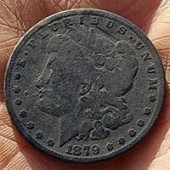

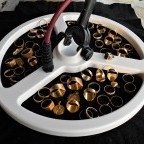

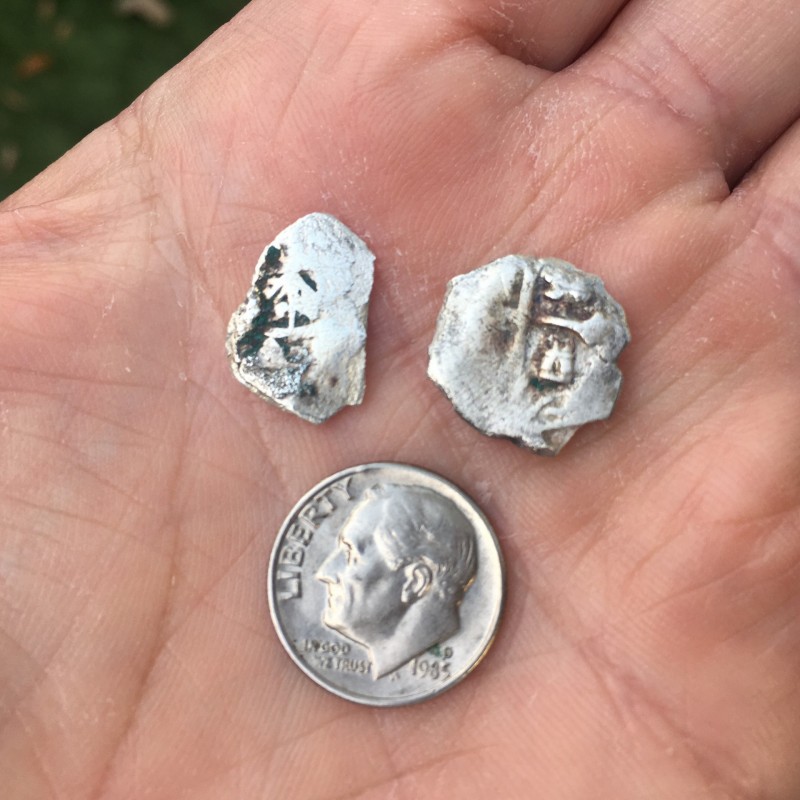
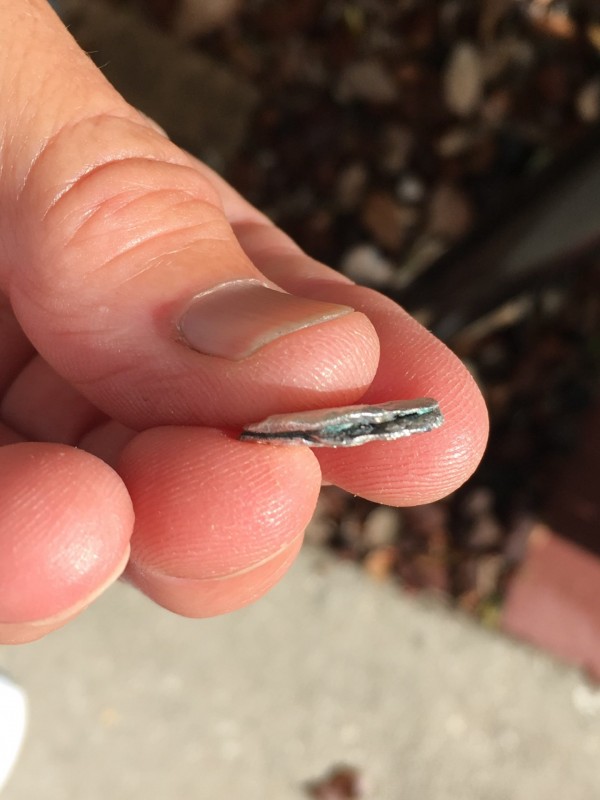
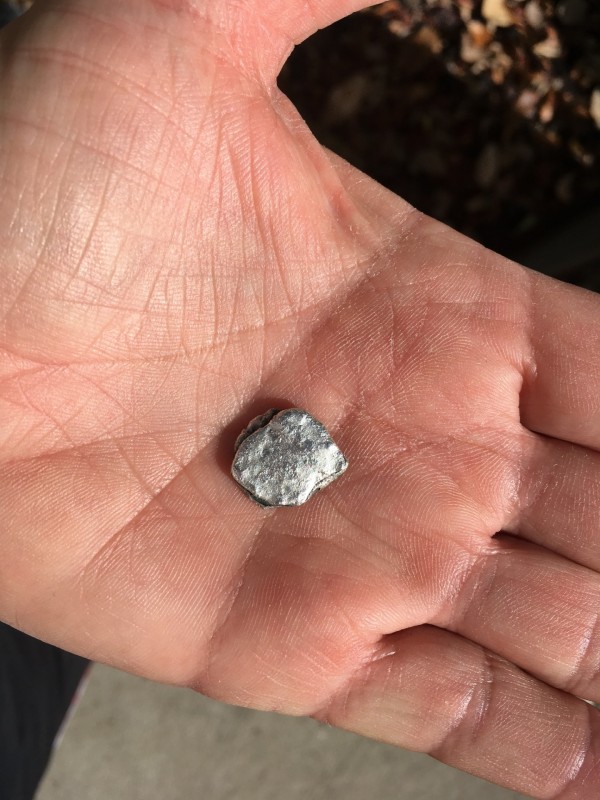
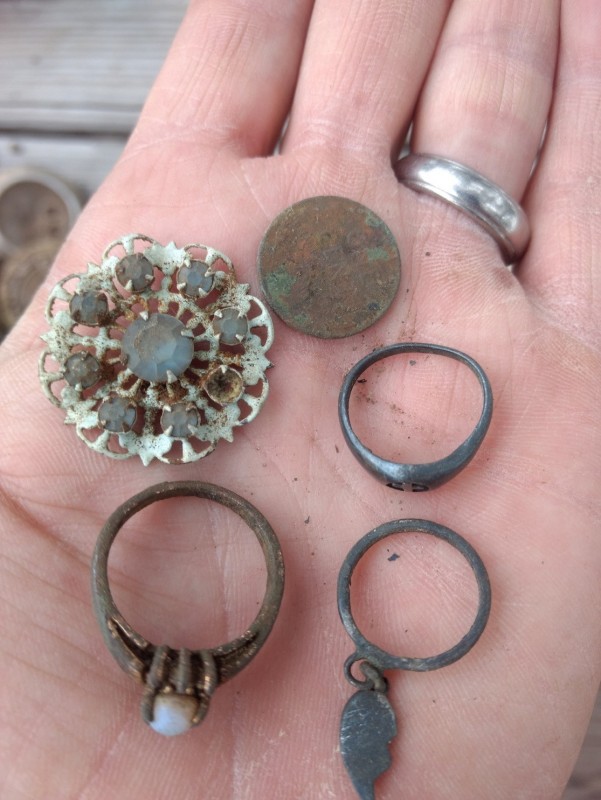
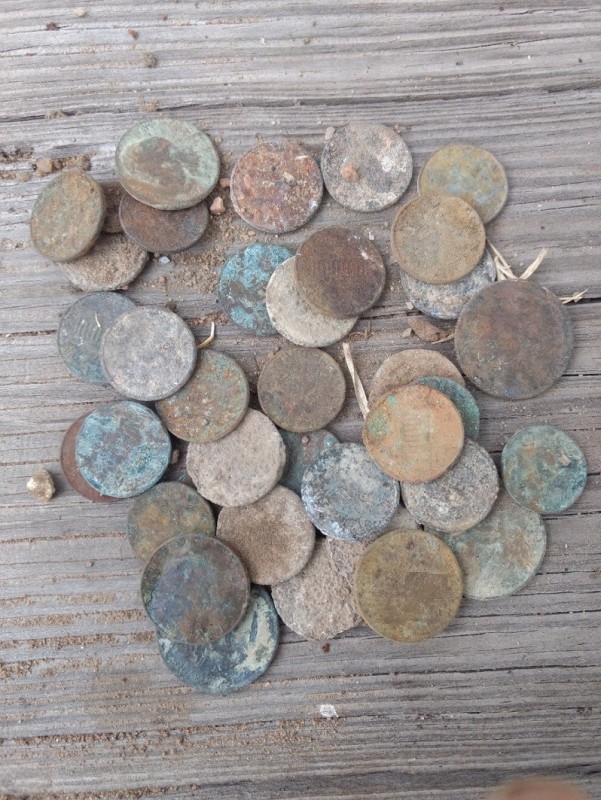
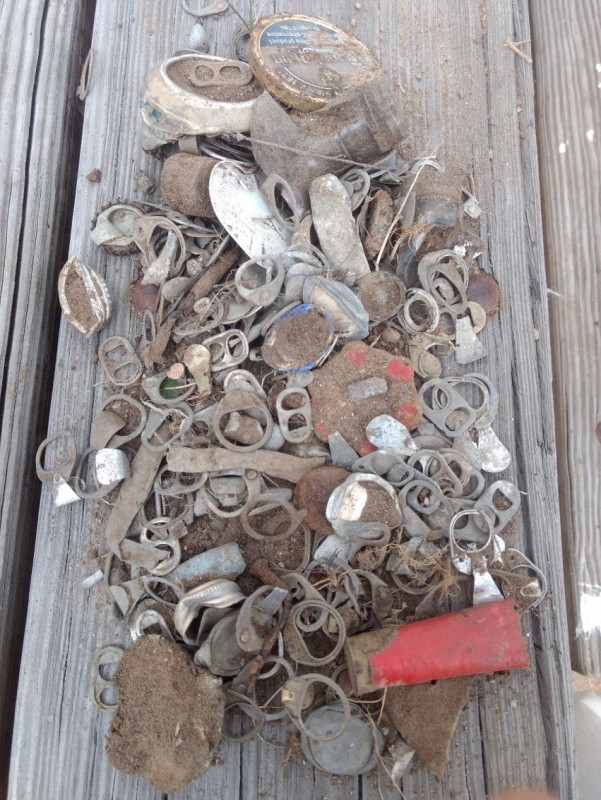

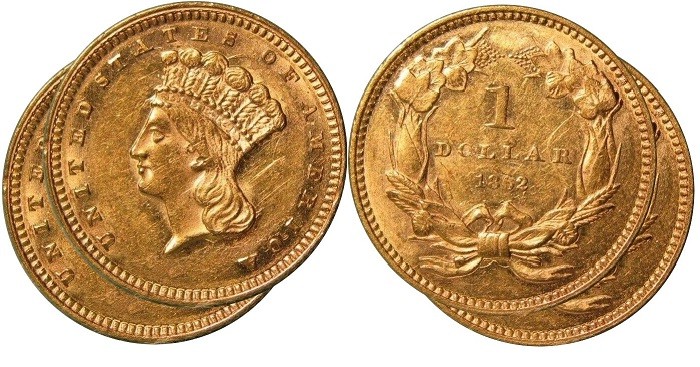
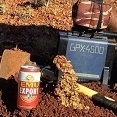
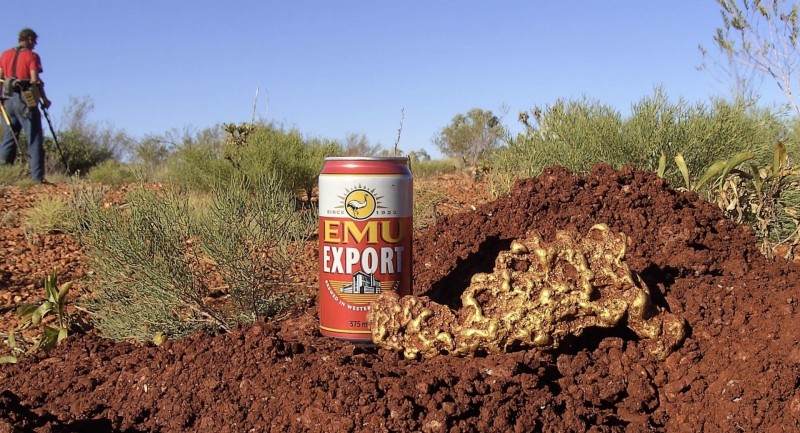
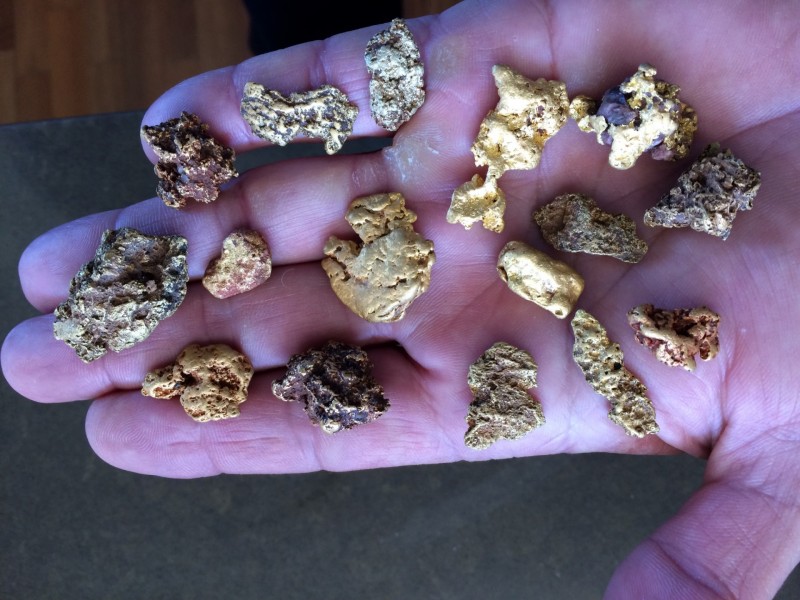
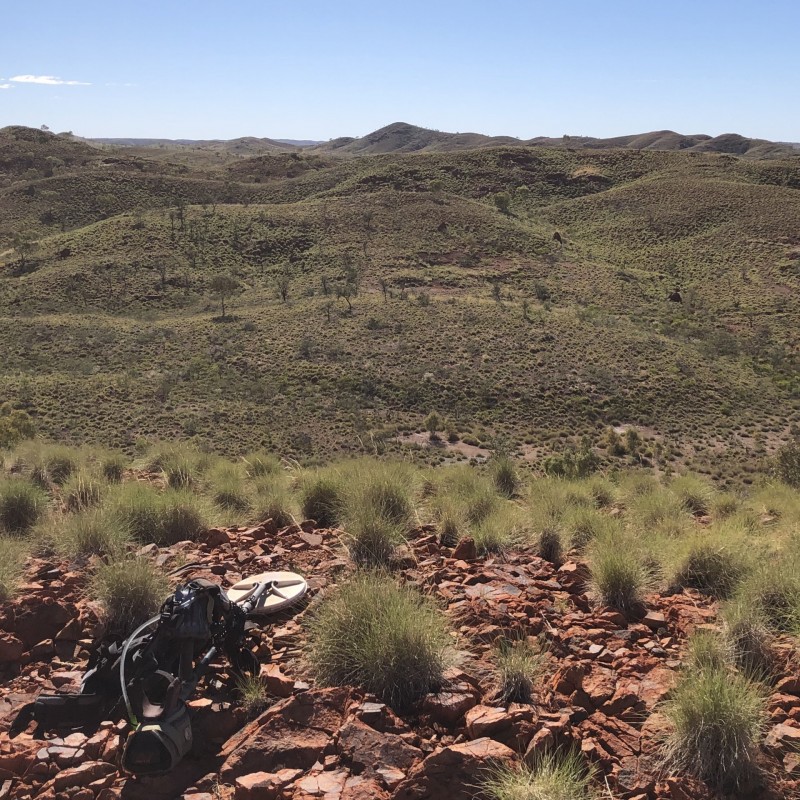


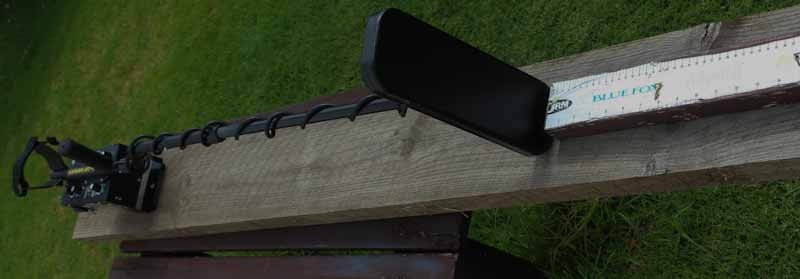
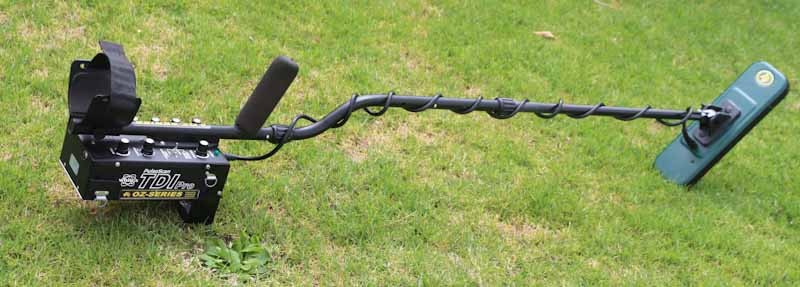
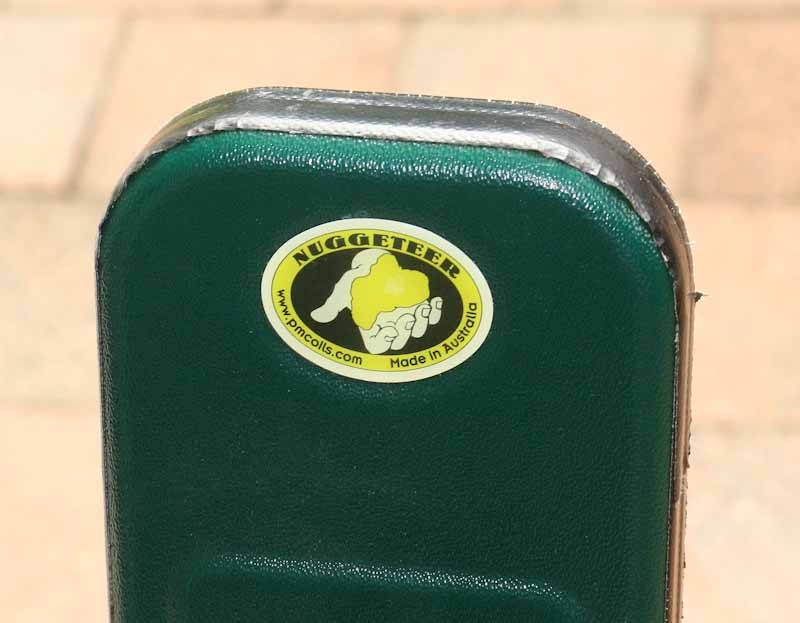
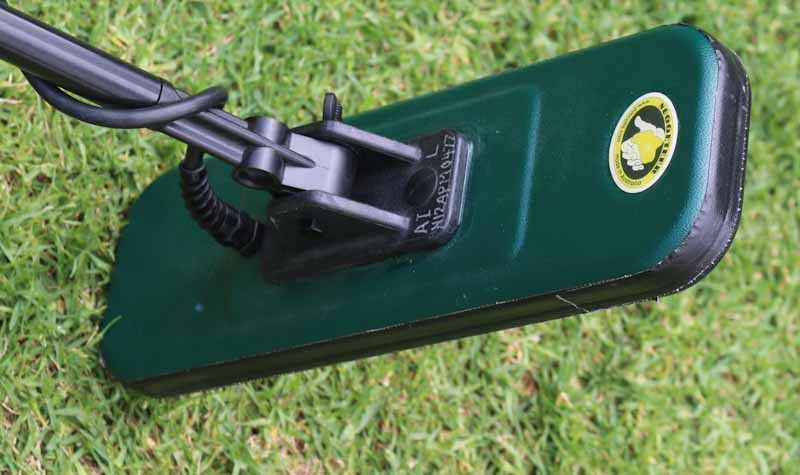
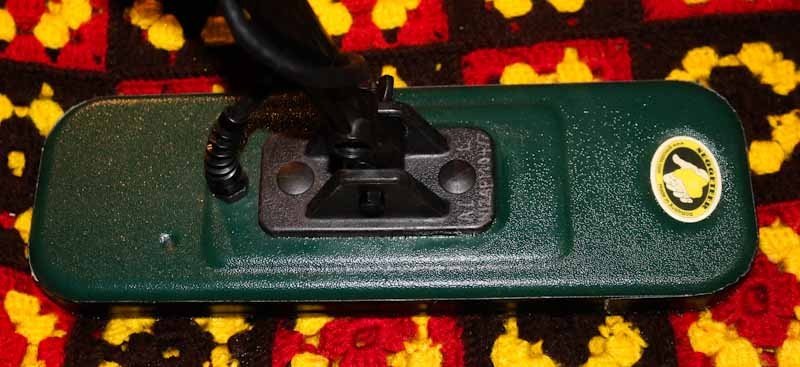



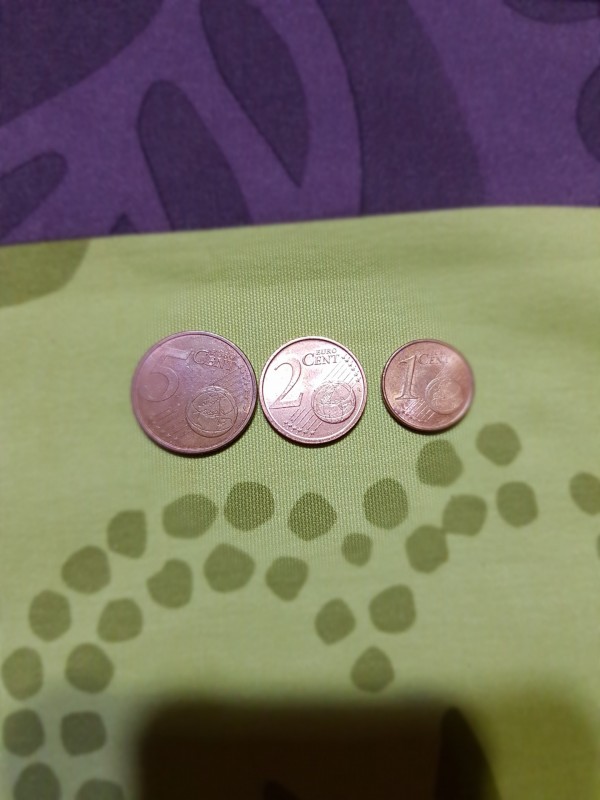
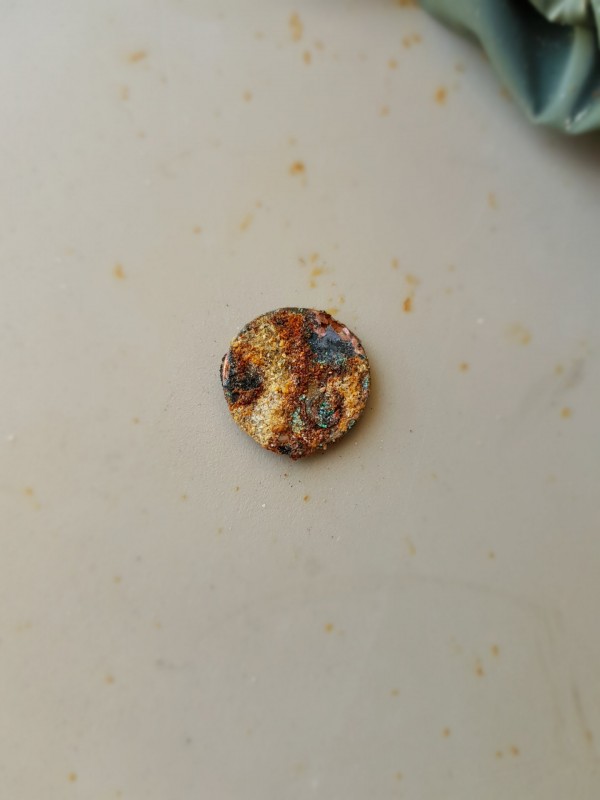

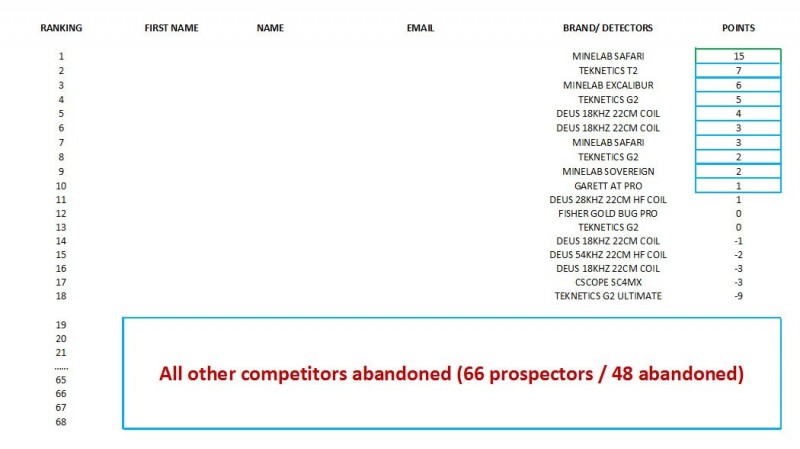
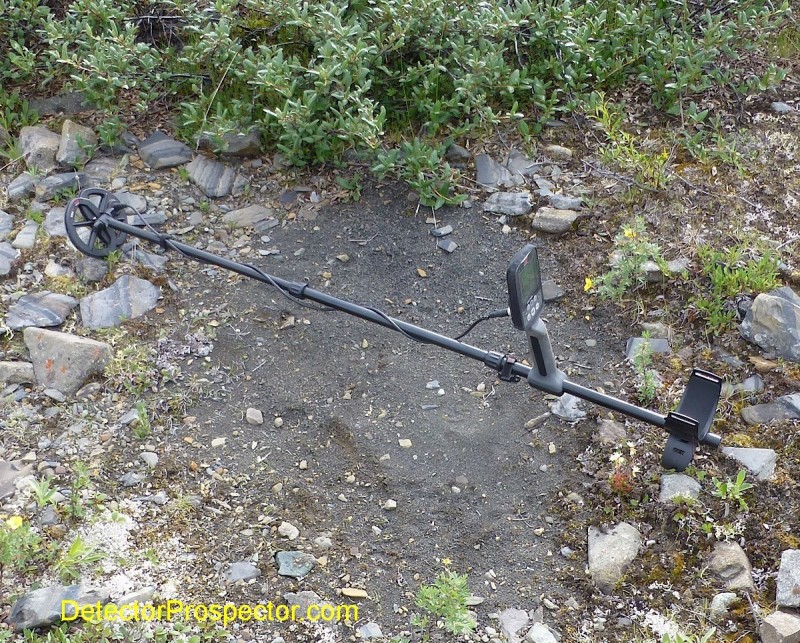
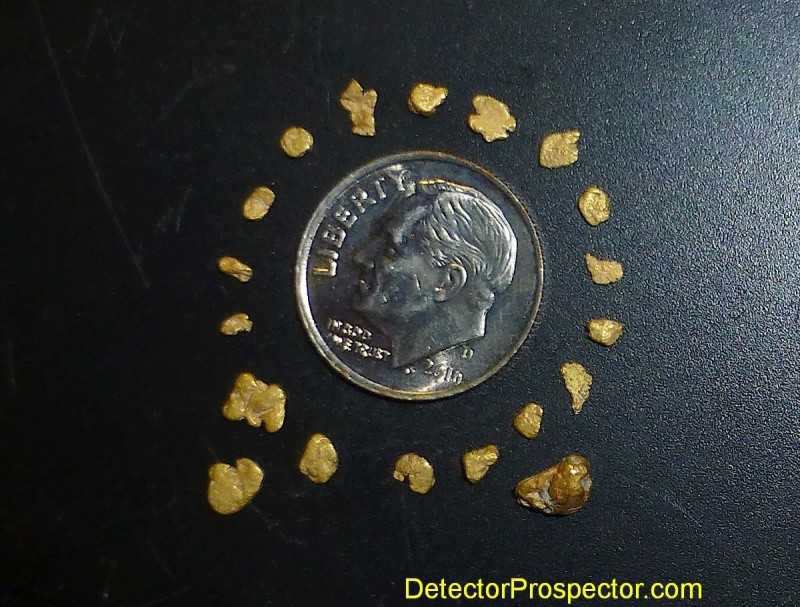
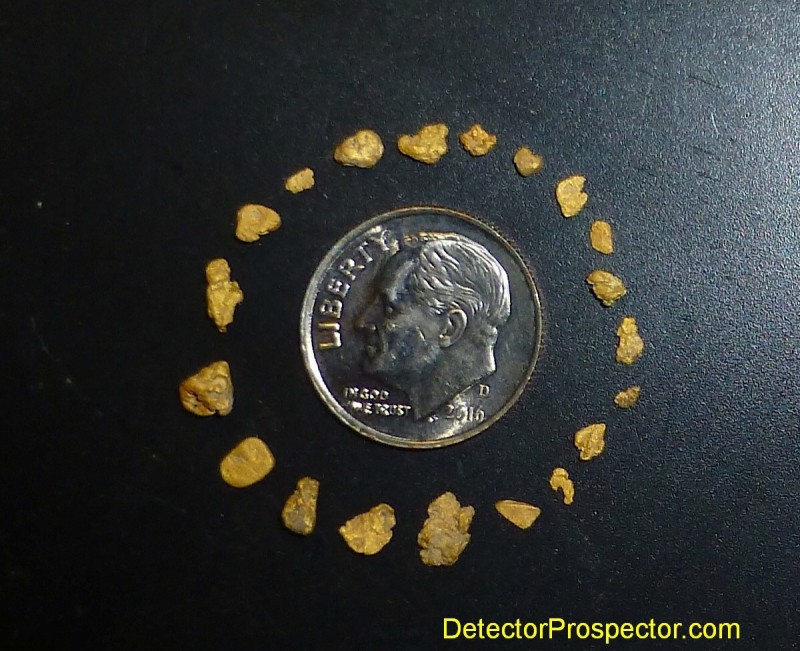
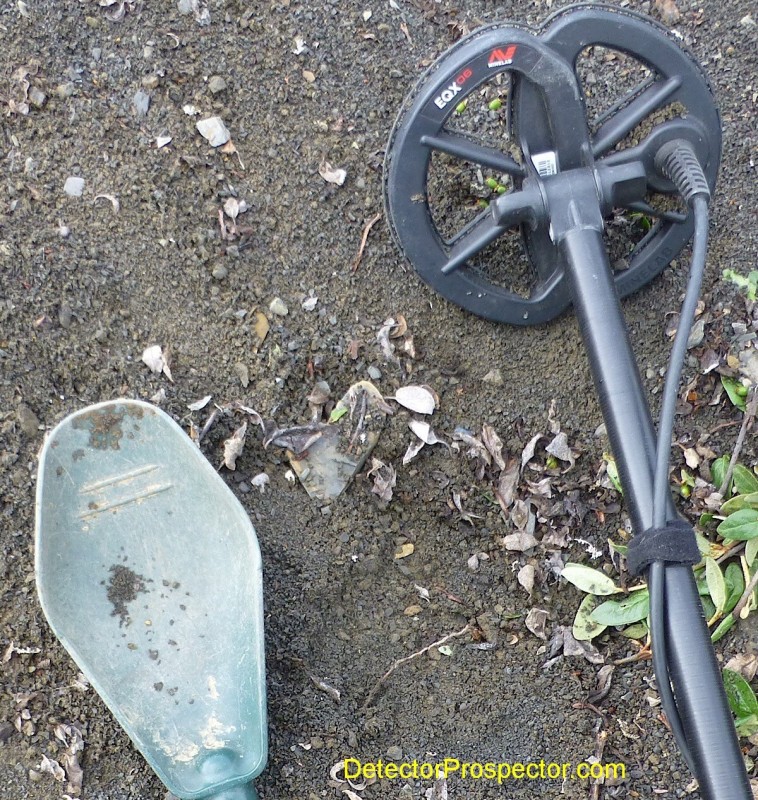

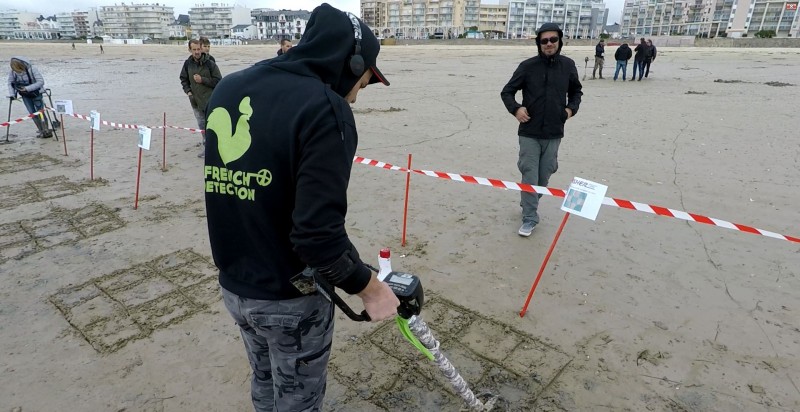
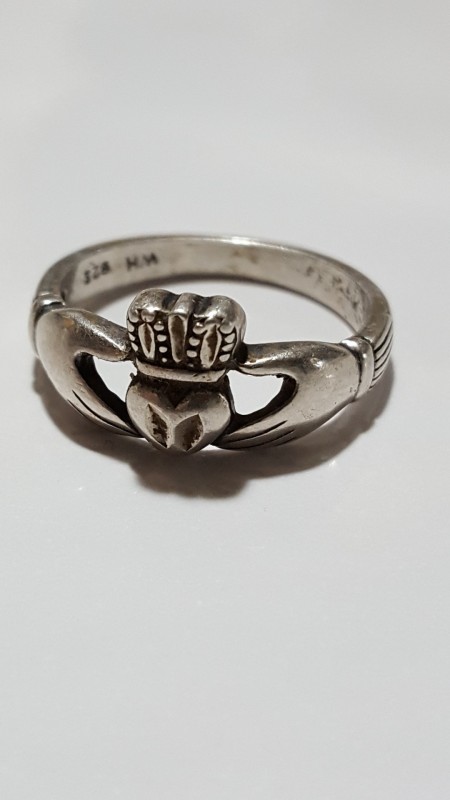



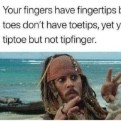

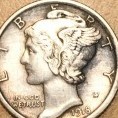


.thumb.jpg.d71314a45f3dc82bf75ac1b96e7e9201.jpg)

.jpg.780abecbf76cd5ad0e649fecdf48ae34.jpg)
